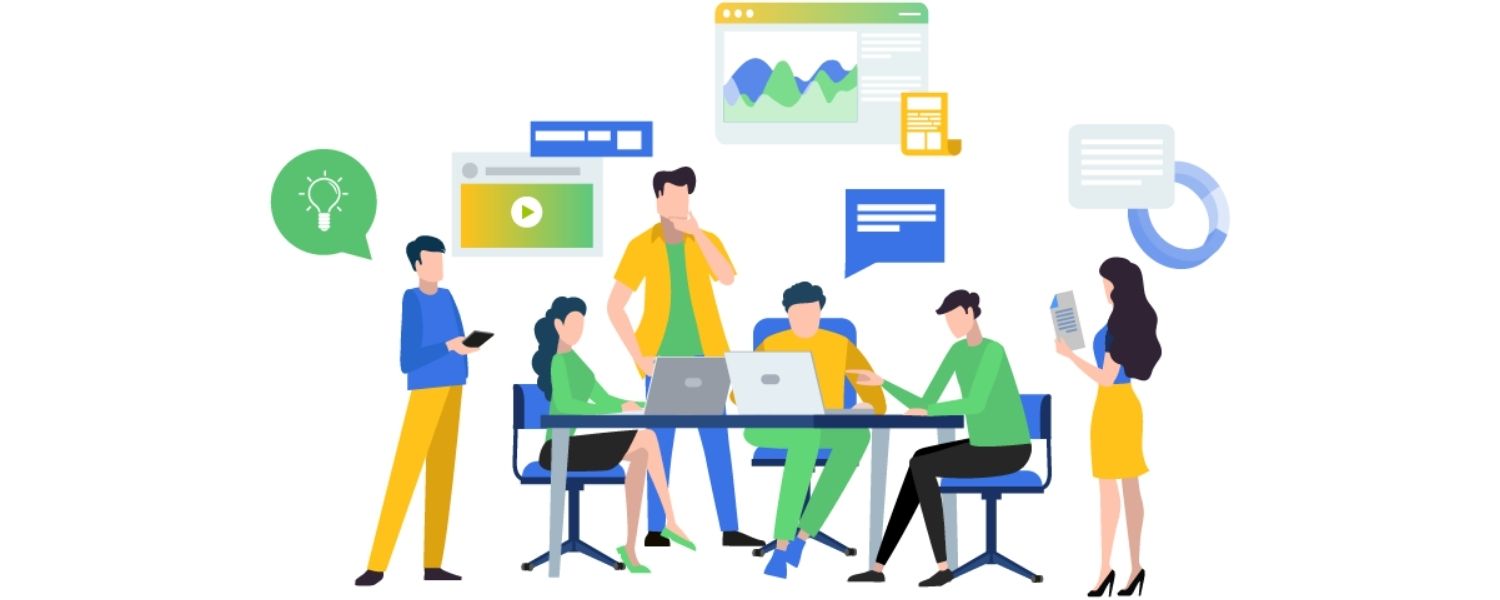Your customer service reps are on the front lines of your business. Every day, they’re interacting directly with customers, helping to keep them happy and even increase revenue.
Unfortunately, their job is highly unpredictable. How frequently will customers reach out? How complex will their requests be?
You need to make sure that your customer service agents have enough bandwidth to handle all of them in a timely manner. A failure to account for these variables can clog up your customer service channels and lead to negative reviews, or worse – loss of reputation and future revenue potential.
That’s why measuring and optimizing agent productivity is so important.
In this article, we’ll identify some ways you can calculate productivity and explore 10 strategies to help you maximize it at every turn.
How should you calculate customer service agent productivity?
The first step toward increasing productivity is understanding how each customer service employee is performing.
That means you should start by identifying key metrics that tell you about agent performance. When you’re able to track these numbers consistently, you can begin to make tweaks to improve them.
Here’s how to get the full picture.

Calculate your CSAT scores
A customer satisfaction score, or CSAT score, is one of the simplest ways to measure how customers feel about products, services or experiences.
Agents who are able to manage their time well, will be able to create memorable customer experiences which will reflect in the CSAT scores.
For customer service interactions, it can be assessed using some variation of a single question:
How satisfied were you with your [COMPANY] customer service experience?
The customer can then answer using a 1 to 5 scale as follows:
- Extremely unsatisfied
- Unsatisfied
- Neutral
- Satisfied
- Extremely satisfied
This question can be shared with your customers using a basic survey tool, and the distribution channel can vary. Some of the most popular methods include email, phone, and chat.
It’s important to follow up soon after the customer’s interaction with your contact center, while the experience is still fresh in their mind. A good rule of thumb is 24 hours. Any longer than that and they may forget details of the interaction or be less motivated to provide an answer.
Once you’ve obtained sufficient data, you can measure your CSAT score by agent, group, or department. Simply take the total number of “4” and “5” scores in your chosen dataset and divide them by the total number of responses in that set.
Your CSAT score can then be expressed as a percentage, like this:
Number of “4” and “5” responses/Total number of responses) x 100 = Percentage of satisfied customers
Find your occupancy rates
Your occupancy rates tell you how often agents are engaged in handling customer interactions during a particular time period. Simply put – it gives you an idea of how busy your agents are.
It’s expressed as a percentage and can be calculated using the following formula:
Total handling time/Total available time x 100 = Occupancy rate
Knowing the occupancy rate for an agent or group of agents can help you make key decisions about their productivity. By using this simple metric to examine your team’s bandwidth, you can shift workload and responsibilities as needed to improve efficiency.
Determine average handling time, average time in queue and blocked call percentage
While CSAT scores and occupancy rates are two of the most important metrics for measuring customer service agent productivity, you may want to drill down even further.
To gain an even more holistic view of your customer service interactions, you can measure the following:
- Average handling time (AHT): The amount of time it takes, on average, to handle a single customer service interaction.
- Average time in queue: The amount of time, on average, that customers have to wait to interact with a customer service agent.
- Blocked call percentage: The percentage of customers who receive a busy tone when calling your customer service team via phone.
Remember, low values across these metrics indicate that your support team is productive. Measure these metrics periodically and make improvements where needed.
10 ways to increase customer service agent productivity
While tracking numbers is important, there’s also a human element involved in maximizing productivity.
Once you’ve determined key data about your customer service team, you can focus on creating a system that enables maximum productivity.
Below are some of the best ways to improve agent productivity by giving your customer service agents the tools and motivation they need to succeed.
1. Use KPIs to encourage agents rather than discipline them
When you’re trying to meet quotas and improve efficiency, you may think of different ways to discourage lackluster performance. Or worse, you might even think that you need to reprimand agents who weren’t able to keep up with their workload.
However, excessive discipline can create more problems than it solves — especially when you consider that 63% of U.S. workers are ready to quit their jobs due to stress.1
To avoid creating an environment of fear and anxiety within your contact center, use positive reinforcement. Helping your customer service agents visualize and track their success will motivate them to achieve more over time.
Freshdesk Arcade simplifies this by allowing you to create a points system to reward agents who meet specific KPIs (like satisfaction scores or handling times).

2. Offer incentives that align with your KPIs
Let’s face it — customer service can be a repetitive role.
With no clear incentives in place, agents may feel like they’re just droning on, switching from one customer interaction to another.

That’s why it helps to create an incentive system that offers specific rewards to agents who meet your KPIs.
For example, you may offer the competitive 9.6% monthly average bonus percentage bonus to agents who average less than 15 minutes per interaction. Or an extra day off for those who achieve a 95% CSAT score for the month.
One of the best ways to support an incentive system is gamifying your customer service agent tasks.
With Freshdesk’s Quests feature, agents can break up monotony by earning points, leveling up, winning rewards and working toward achievements.

3. Make it easy for agents to access the knowledge they need
There’s hardly anything more frustrating than not having the tools you need to do your job.
Customer service agents need fast and easy access to a single knowledge base that can help them solve any customer issue.
Without that, they’ll be scrambling to locate key information — creating longer waits and driving up average handling times.
Publishing an internal knowledge base with onboarding information, product guides, troubleshooting workflows, company procedures, etc can help your agents get the information they need.
To make agents’ jobs easier (and customers happier), consider using agent-facing AI technology like Freshdesk’s Freddy Assist Bot feature.
You can create conversational flows for specific customer issues within the Assist Bot. Agents can then interact with the bot on Freshdesk and get contextual assistance.
This kind of replicability enables your agents to consistently provide high-quality support and first-call resolutions without feeling lost.
4. Automate processes and streamline agent tasks
Sometimes a customer issue is best solved by a common process or procedure. In these cases, automating these processes is the best way to save your team’s time.
You can use workflow automation and robotic process automation to empower your agents to handle these customer interactions in a single click using tools like Robo Assist.
Streamlining these repetitive processes can lead to faster resolutions, enabling agents to work on other tasks.
5. Allow agents to take regular breaks and adapt their schedule to their lifestyle
It’s easy to overlook the fact that your customer service team members need a break every now and then.
Burnout is real, and it’s important to think about. In fact, 79% of employees across all industries are suffering from mild, moderate, or severe burnout, any of which can contribute to loss of interest and turnover.2
Schedule regular breaks for your agents throughout the day and encourage them to completely unplug when they’re off the clock. You can even implement a system where agents clock in and out at their own discretion — as long as they continue to meet quotas and standards.
Additionally, if you’re working with a global team, keep in mind that the time zones will be different. Coordinate schedules to make sure you’re giving agents the breaks and time off they need.
6. Enable agents to assist customers on multiple channels from a single screen

For SaaS companies, customer service takes place across multiple channels — including email, phone, chat, social media, and more.
Your agents should be able to help customers on all of these channels from a single screen, without jumping between different tools and tabs.
Try using tools like Freshdesk’s omnichannel helpdesk software to enable your agents to seamlessly manage and provide support across every channel.
This will increase agent efficiency, leading to less fatigue and frustration.

7. Provide avenues for agents to give feedback or contribute ideas
Your customer service agents are in constant conversation with customers.
That means agents can serve as in-house resources for improving your products and services — but only if they have effective ways to do so.
Consider opening a feedback form or survey for all of your agents. Allow them to submit ideas and suggestions anonymously or by name. Doing this can help agents feel more heard and appreciated.
You can even bring agents onboard to help with product road mapping.
It’s also important for agents to have regular one-on-one meetings with managers or team leads. This allows scheduled time for agents to express any thoughts or concerns in a safe and receptive environment.
8. Give constructive feedback frequently
Never underestimate the power of positive feedback. After all, who doesn’t like to be congratulated for a job well done? In addition to making people feel good, positive feedback can also help improve the quality of their work.
While it’s important to let your customer service agents know what they’re doing well, they benefit more when you highlight areas for continued improvement. Giving constructive feedback often helps in calling out problems and recommending course corrections before they start snowballing.
There is always a chance of something going wrong, and frequent feedback sessions help mitigate the potential damage. Chances are, each employee will welcome your thoughts. Across industries, 23% of employees say they don’t receive feedback from their direct managers frequently enough.3
9. Implement wellness initiatives
Customer service agents work long hours in front of the screen, which can take a toll on physical and mental health.
To reduce stress, try hosting optional group activities like mid-day coffee breaks or weekly game nights. These activities can break up the monotony and help agents (who often work remotely) feel more like part of the workplace community.
Another way to promote healthy lifestyles for your customer service agents and other employees is to start a wellness challenge.
Have them keep track of their daily exercise (via total minutes, steps walked, etc.) and log it in a shared portal to compete for prizes or just plain old bragging rights.
10. Enable contextual collaboration
Customer service agents need hassle-free collaboration to offer fast resolutions, which means they also need access to the right tools.
Ideally, they should be able to collaborate with any other company employee or external stakeholder directly within their helpdesk software.
Freshdesk’s collaboration features make this easy by allowing agents to loop in teammates for discussions directly inside tickets. This gives complete context to the agents tagged into a ticket, thus reducing back and forth information exchange.
Agents can also keep a record of the conversation on every ticket and retain visibility into tickets that other teams are working on.
By reducing extra hassles and keeping all communication in one place, your agents will be able to get more done, more effectively.
The final word
Your customer service agents are dealing with a lot of variables every day. They also comprise one of the most important parts of your company and can directly affect overall customer satisfaction.
By tracking agent productivity, you can tighten any loose ends in your operations using the strategies outlined above.
And remember, agents need as much from you as you need from them. If you can make their jobs simpler, more efficient, and human-friendly, they’ll continue to create outstanding experiences for your customers.
For more ways to improve agent productivity using AI-powered solutions, check out this post.
Source:
1 – https://resources.dynamicsignal.com/ebooks-guides/state-of-employee-communication-and-engagement-study-2019#:~:text=2019%20State%20of%20Employee%20Communication%20and%20Engagement%20Study
2 – https://www.octanner.com/global-culture-report/2020/burnout.html
3 – https://officevibe.com/guides/employee-feedback
Looking For Startup Consultants ?
Call Pursho @ 0731-6725516
Telegram Group One Must Follow :
For Startups: https://t.me/daily_business_reads




